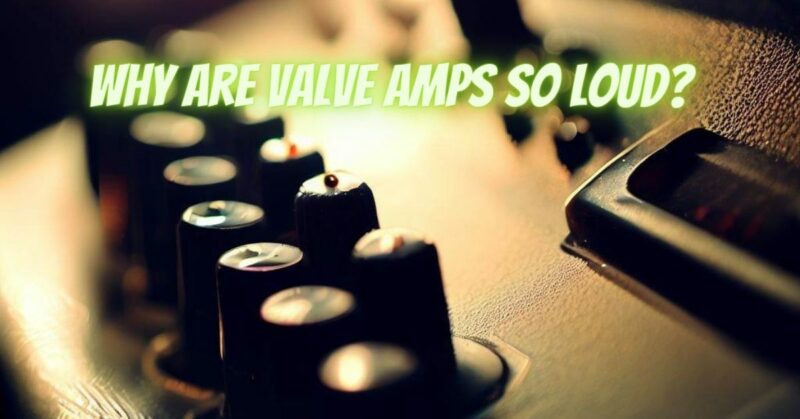Valve amplifiers, often referred to as tube amplifiers, have a longstanding reputation for their exceptional power and volume capabilities. Musicians and audio enthusiasts are often drawn to the commanding sound of valve amps. In this article, we’ll explore the reasons behind the impressive volume output of valve amps and the unique characteristics that make them so loud.
- Valve Amplifier Basics:
To understand why valve amplifiers are so loud, it’s essential to grasp their basic operation. Valve amps use vacuum tubes (valves) as the amplifying components. These tubes are known for their ability to handle high voltage and current, making them capable of producing substantial power.
- High Voltage Operation:
One of the key features of valve amplifiers is their ability to operate at high voltage levels. Unlike solid-state amplifiers, which typically operate at lower voltages, valve amplifiers can handle significantly higher voltage levels. This high voltage allows them to produce more power and, consequently, higher volume levels.
- Class A and Class AB Operation:
Valve amplifiers often operate in Class A or Class AB modes, which are known for their efficiency and power output. Class A amplifiers provide continuous current to the output stage, delivering consistent power, while Class AB amplifiers provide a balance between efficiency and power output. Both modes are capable of producing high volume levels.
- Characteristics of Valve Distortion:
Valve amplifiers are known for their warm and rich harmonic distortion characteristics. When driven hard, they produce a pleasing and musically desirable distortion that many musicians and audiophiles find appealing. This distortion adds to the perceived loudness and “crunch” of valve amps.
- Speaker Matching:
Valve amps are often paired with high-quality speakers that can handle the power output of the amplifier. The choice of speaker and its efficiency significantly impact the overall volume and sound quality of the system.
- Dynamic Range:
Valve amplifiers typically have a wide dynamic range, allowing them to reproduce both quiet and loud passages with clarity and authority. This dynamic capability contributes to their perceived loudness and ability to handle complex musical passages.
- Unique Tone and Presence:
Valve amplifiers offer a unique tone and presence that many musicians and audiophiles prefer. This tonal character, combined with their volume capabilities, makes them a popular choice for live performances and recording studios.
- Push-Pull Configuration:
Many valve amplifiers use a push-pull configuration, where two matched tubes work together to amplify the signal. This configuration increases efficiency and power output, contributing to the loudness of the amplifier.
Valve amplifiers are known for their impressive volume capabilities, stemming from their high voltage operation, Class A/AB operation, harmonic distortion characteristics, and other unique features. Musicians and audio enthusiasts appreciate the commanding and distinct sound of valve amps, which make them a popular choice for live performances and studio recordings. While they may be louder than many solid-state amplifiers, their appeal goes beyond sheer volume, as their tone, character, and dynamic range contribute to their legendary status in the world of audio amplification.


